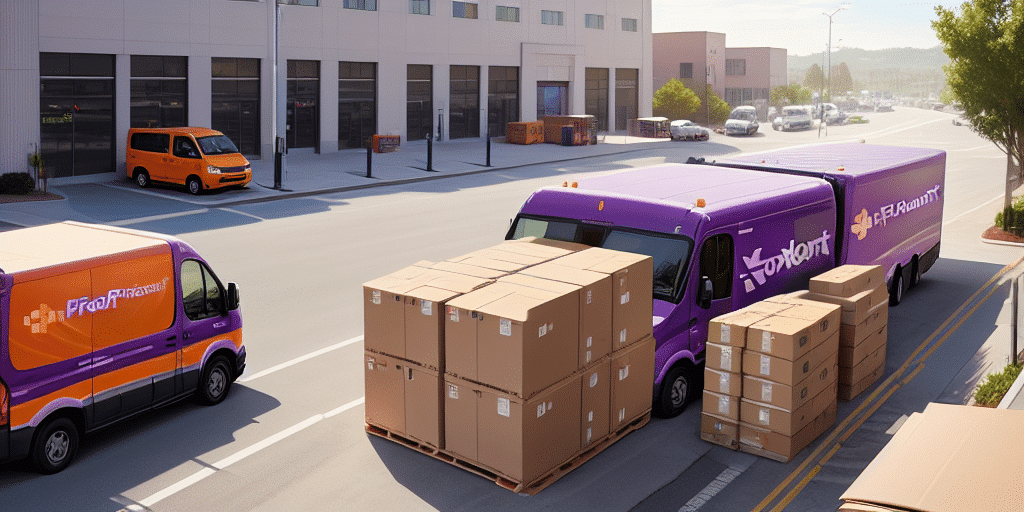Introduction to Integrating SmartPost with FedEx Ship Manager
Optimizing your e-commerce shipping process is crucial for enhancing customer satisfaction and reducing operational costs. Integrating SmartPost with FedEx Ship Manager offers a cost-effective and efficient solution for shipping lightweight packages across the United States. This integration leverages both FedEx's robust network and the United States Postal Service (USPS) for final delivery, making it an ideal choice for online retailers.
Key Benefits of SmartPost for E-commerce Businesses
Cost Savings on Shipping Rates
SmartPost provides lower shipping rates for packages up to 70 pounds, making it a budget-friendly option for businesses with high shipping volumes. According to Statista, the number of online shoppers in the U.S. continues to grow, emphasizing the need for economical shipping solutions.
Reliable Tracking and Delivery Confirmation
SmartPost offers reliable tracking features that allow businesses to monitor shipments from dispatch to delivery. This transparency ensures that customers are kept informed about their package status, enhancing trust and satisfaction.
Environmental Benefits
By utilizing USPS for the final delivery, SmartPost reduces the number of delivery trucks on the road, thereby decreasing carbon emissions. This environmentally friendly approach aligns with the growing consumer preference for sustainable business practices.
Step-by-Step Guide to Integrating SmartPost into FedEx Ship Manager
1. Accessing FedEx Ship Manager
Begin by logging into your FedEx Ship Manager account. Navigate to the 'Administration' tab to configure your shipping preferences.
2. Configuring Shipping Preferences
Select 'Configure Shipping Preferences' and choose 'FedEx SmartPost' under the shipping options. Enable the feature by selecting 'Yes' and enter your SmartPost account information.
3. Finalizing the Setup
After entering the necessary information, perform a test shipment to ensure that the integration is functioning correctly. This step helps identify and resolve any initial setup issues.
Best Practices for Configuring SmartPost
Accurate Package Information
Ensure that all package details, including weight, dimensions, and shipping addresses, are entered accurately. SmartPost has specific requirements: packages must weigh less than 70 pounds and have combined length and girth dimensions under 130 inches.
Selecting the Correct Service Type
Choose the appropriate service type—either "Pickup" or "Dropoff"—based on your business needs. Selecting the wrong service type can result in delivery delays and additional fees.
Utilizing Labeling and Tracking Features
Take advantage of FedEx's labeling and tracking features to streamline the shipping process. Proper labeling ensures that packages are routed correctly, while tracking provides visibility into the shipment's progress.
Troubleshooting Common Integration Issues
Incorrect Account Information
If you encounter issues during integration, double-check that all account details are entered correctly. Incorrect information can prevent SmartPost from functioning properly.
Packaging Errors
Ensure that packages meet SmartPost’s weight and size restrictions. Exceeding these limits can make packages ineligible for SmartPost shipping.
Missing or Incorrect Addresses
Verify that all shipping addresses are complete and accurate. Missing or incorrect addresses can lead to delivery failures.
If issues persist, contact FedEx Customer Support for further assistance.
Cost and Time Savings with SmartPost
Lower Shipping Costs
SmartPost’s integration with USPS final delivery services results in significant cost savings compared to traditional FedEx shipping options. This is particularly advantageous for businesses shipping high volumes of lightweight packages.
Efficient Delivery Process
SmartPost utilizes FedEx for the initial transit and USPS for last-mile delivery, ensuring efficient and reliable shipping. According to FedEx, this combination leverages the strengths of both carriers to optimize delivery times.
Enhanced Tracking Capabilities
With real-time tracking, businesses can monitor shipments throughout the delivery process. This feature reduces the likelihood of lost packages and allows for proactive problem-solving.
Comparing SmartPost with Other FedEx Shipping Options
SmartPost vs. FedEx Ground
While SmartPost offers lower rates for lightweight packages, FedEx Ground may be more suitable for heavier packages or when faster delivery is required. Comparing rates and delivery times based on your specific shipping needs is essential.
SmartPost vs. FedEx Express
For time-sensitive shipments, FedEx Express provides expedited shipping options. SmartPost, while cost-effective, typically has longer delivery times due to the USPS handoff.
Understanding the SmartPost Delivery Process
The SmartPost delivery process involves multiple stages to ensure efficient and reliable shipping:
- Dispatch: Packages are initially transported by FedEx to a designated USPS facility.
- USPS Handoff: The USPS takes over for the final delivery leg, utilizing its extensive network for last-mile delivery.
- Tracking: Both FedEx and USPS provide tracking updates, allowing businesses and customers to monitor the shipment's progress.
This collaborative approach combines the strengths of both carriers, enhancing overall delivery efficiency.
Conclusion
Integrating SmartPost with FedEx Ship Manager presents a strategic opportunity for e-commerce businesses to optimize their shipping processes. By leveraging SmartPost, businesses can achieve significant cost savings, reliable tracking, and environmentally friendly delivery options. However, it is essential to adhere to SmartPost's packaging requirements and follow best practices to ensure a seamless integration. For businesses shipping lightweight, non-urgent packages, SmartPost offers a viable solution to enhance customer satisfaction and streamline operations.



















